April 26th “History Lesson”

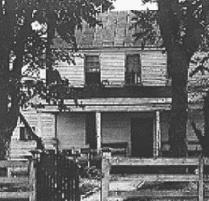
April 26, 1865: John Wilkes Booth was killed when Union soldiers tracked him down to a Virginia farm 12 days after he assassinated President Abraham Lincoln.
After shooting the president, Booth – at the time, one of the most famous actors in the country when he shot Lincoln during a performance at Ford’s Theater in Washington, D.C. – jumped to the stage below Lincoln’s box seat. He landed hard, breaking his leg, before escaping to a waiting horse behind the theater. Many in the audience recognized Booth, so the army was soon hot on his trail. Booth and his accomplice, David Herold, made their way across the Anacostia River and headed toward southern Maryland.
The pair stopped at Dr. Samuel Mudd’s home, and Mudd treated Booth’s leg. This earned Mudd a life sentence in prison when he was implicated as part of the conspiracy, but the sentence was later commuted. Booth found refuge for several days at the home of Thomas A. Jones, a Confederate agent, before securing a boat to row across the Potomac to Virginia.
After receiving aid from several Confederate sympathizers, Booth’s luck finally ran out. The countryside was swarming with military units looking for Booth, although few shared information since there was a $20,000 reward. While staying at the farm of Richard Garrett, Federal troops arrived on their search but soon rode on. The unsuspecting Garrett allowed his suspicious guests to sleep in his barn, but he instructed his son to lock the barn from the outside to prevent the strangers from stealing his horses.
A tip led the Union soldiers back to the Garrett farm, where they discovered Booth and Herold in the barn. Herold came out, but Booth refused. The building was set on fire to flush Booth, but he was shot by Union soldier Thomas P. “Boston” Corbett while still inside. Booth, fatally wounded in the neck, was dragged from the barn to the porch of Garrett’s farmhouse, where he died three hours later. The bullet had pierced three vertebrae, and partially severed his spinal chord, paralyzing him. Asking that his hands be raised to his face so he could see them, Booth uttered his last words, “Useless, useless,” and died as dawn was breaking.
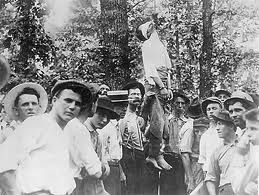
April 26, 1913: Thirteen-year-old Mary Phagan was found sexually molested and murdered in the basement of the Atlanta, Georgia, pencil factory where she worked. Her murder later led to one of the most disgraceful episodes of bigotry, injustice, and mob violence in American history.
Next to Phagan’s body were two small notes that attempted to pin the crime on Newt Lee, the night watchman at the factory. Lee was arrested, but it quickly became evident that the notes were a crude attempt by the barely literate Jim Conley to cover up his own involvement. Conley was the factory’s janitor, a black man, and a well-known drunk.
Conley then decided to shift the blame toward Leo Frank, the Jewish owner of the factory. Despite the absurdity of Conley’s claims, they nevertheless took hold. The case’s prosecutor was Hugh Dorsey, a notorious bigot and friend of Georgia’s populist leader, Tom Watson. Reportedly, Watson told Dorsey, “Hell, we can lynch a ni**er anytime in Georgia, but when do we get the chance to hang a Yankee Jew?”
Frank was tried by Judge Leonard Roan, who allowed the blatantly unfair trial to go forward even after he was privately informed by Conley’s attorney that Conley had admitted to Frank’s innocence on more than one occasion. The trial was packed with Watson’s followers and readers of his racist newspaper, Jeffersonian. The jury was terrorized into a conviction despite the complete lack of evidence against Frank.
Georgia governor John Slaton initiated his own investigation and quickly concluded that Frank was completely innocent. Three weeks before his term ended, Slaton commuted Frank’s death sentence in the hope that he would eventually be freed when the publicity died down. However, Watson had other plans: He mobilized his supporters to form the Knights of Mary Phagan. Thousands of Jewish residents in Atlanta were forced to flee the city because police refused to stop the lynch mob.
The “Knights” then made their way to the prison farm where Frank was incarcerated. They handcuffed the warden and the guards and abducted Frank, bringing him to Marietta, Phagan’s hometown. There he was hanged to death from a giant oak tree. Thousands of spectators came to watch and have their picture taken in front of his lifeless body. The police did nothing to stop the spectacle.
Although most of the country was outraged and horrified by the lynching, Watson remained very popular in Georgia. In fact, he was elected to the U.S. Senate in 1920.
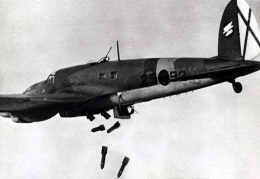
April 26, 1937: The German military tested its powerful new air force – the Luftwaffe – on the Basque town of Guernica in northern Spain. Although the independence-minded Basque region opposed General Francisco Franco’s Nationalist forces in the Spanish Civil War, Guernica itself was a small rural city of only 5,000 inhabitants that declared neutrality in the conflict.
With Franco’s approval, the cutting-edge German aircraft began their unprovoked attack at 4:30 p.m., the busiest hour of the market day in Guernica. For three hours, the German planes poured down a continuous and unopposed rain of bombs and gunfire on the town and surrounding countryside. One-third of Guernica’s 5,000 inhabitants were killed or wounded, and fires engulfed the city and burned for days.
The indiscriminate killing of civilians at Guernica aroused world opinion and became a symbol of fascist brutality. Unfortunately, by 1942, all major participants in World War II had adopted the bombing innovations developed by the Nazis at Guernica, and by the war’s end, in 1945, millions of innocent civilians had perished under Allied and Axis air raids.
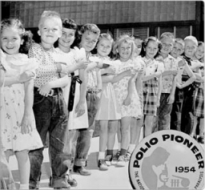
April 26, 1954: The Salk polio vaccine field trials, involving 1.8 million children, began at the Franklin Sherman Elementary School in McLean, Virginia. Children in the United States, Canada and Finland participated in the trials, which used for the first time the now-standard double-blind method, whereby neither the patient nor attending doctor knew if the inoculation was the vaccine or a placebo.
One year later, researchers announced the vaccine was safe and effective and it quickly became a standard part of childhood immunizations in America. In the ensuing decades, polio vaccines would all but wipe out the highly contagious disease in the Western Hemisphere.

April 26, 1986: The world’s worst nuclear accident to date occurred at the Chernobyl nuclear plant near Kiev in Ukraine. The full toll from this disaster is still being tallied, but experts believe that thousands of people died and as many as 70,000 suffered severe poisoning. Some reports estimate that as many as 4,000 clean-up workers died from radiation poisoning. Birth defects among people living in the area have increased dramatically. Thyroid cancer has increased tenfold in Ukraine since the accident.
In addition, a large area of land may not be livable for as much as 150 years. The 18-mile radius around Chernobyl was home to almost 150,000 people who had to be permanently relocated.
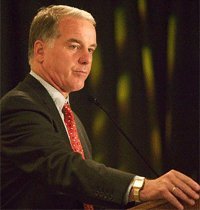
April 26, 2000: Vermont Gov. Howard Dean signed the nation’s first bill allowing same-sex couples to form civil unions. Dean signed the legislation – which went into effect on July 1 – without a public ceremony but later stated, “There is much to celebrate about this bill. Those celebrations, as the subject of this bill, will be private. They will be celebrated by couples and their families, but people making commitments to each other…. I believe this bill enriches all of us as we look with new eyes at a group of people who have been outcasts for many, many generations.”